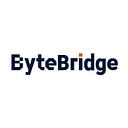Vanilla RAG vs Agentic RAG
Introduction
Retrieval-Augmented Generation (RAG) systems represent a significant advancement in AI technology, designed to enhance the capabilities of AI models by integrating retrieval mechanisms with generative models. This report provides a comprehensive comparison of two key variants of RAG: Vanilla RAG and Agentic RAG. We will explore their architectures, functionalities, use cases, and advantages, offering insights into how these systems are revolutionizing information retrieval and generation in AI applications.
This research is solely done by Kompas AI
Vanilla RAG
Architecture
Vanilla RAG combines the power of generative models with efficient retrieval systems:
Components:
- Generative model (e.g., GPT-4)
- Retrieval system (e.g., vector database)
- Retrieval Process: Employs vector databases and similarity search techniques to retrieve relevant documents or sections from external data sources.
- Generation Process: Utilizes a large language model (LLM) to generate responses based on the retrieved data and the user’s query.
Workflow:
- Embeds documents into a searchable format
- Retrieves relevant documents based on similarity to the input query
- Generates a response incorporating the retrieved information and user context
Functionality
- Static Information Retrieval: Excels in generating responses based on user context and fetching relevant documents from a pre-defined database.
- Primary Focus: Effective for scenarios involving static information, such as FAQs, knowledge bases, and document repositories.
Use Cases
- Retrieving Up-to-Date Information: Accesses and provides the latest data from various pre-indexed sources, ensuring responses are based on current information.
- Accessing Specialized Domain Knowledge: Effectively retrieves specific knowledge from specialized databases or documents, making it valuable for industries with complex, domain-specific information.
- Answering Complex, Data-Driven Queries: Handles intricate queries requiring detailed and accurate responses based on retrieved data, enhancing the depth and precision of AI-generated answers.
Limitations
- Static Data Sources: Primarily relies on static, pre-indexed data sources, which may limit its effectiveness in dynamic environments requiring real-time information retrieval.
- Complex Scenarios: May face challenges in scenarios requiring deeper understanding or multi-step reasoning beyond simple information retrieval and generation.
This research is solely done by Kompas AI
Agentic RAG
Architecture
Agentic RAG builds upon the foundation of Vanilla RAG, incorporating additional components for enhanced functionality:
Components:
- Retrieval system (for efficient information retrieval from vast datasets)
- Generation model (for producing detailed and contextually appropriate responses)
- Agent layer (integrating AI agents to enhance decision-making and retrieval processes)
- Multiple tools for various tasks beyond simple retrieval
- Enhanced Functionality: Extends Vanilla RAG capabilities with dynamic data retrieval and advanced processing techniques.
Functionality
- Dynamic Data Retrieval: Integrates APIs, web scraping tools, and other dynamic data sources, allowing for:
- Real-time data fetching
- Code execution
- Interaction with external systems
Multi-Step Reasoning: Excels in:
- Breaking down complex queries into manageable parts
- Summarizing information across multiple documents
- Comparing and synthesizing data from various sources
- Formulating follow-up questions for deeper exploration
- Contextual Understanding: Maintains a high level of contextual awareness, providing coherent and logically structured answers that align with the user’s intent and the broader context of the interaction.
Use Cases
- Customer Service: Streamlines customer interactions by providing quick, accurate, and contextually relevant responses, enhancing overall customer satisfaction.
- Insurance: Automates claims processing and enhances customer engagement through personalized communication, improving efficiency and accuracy in policy-related inquiries.
- Content Generation: Generates grounded questions and answers, particularly valuable for enterprises leveraging generative AI for content creation and knowledge management.
- Marketing:
- Analyzes customer data for personalized marketing strategies
- Offers real-time competitive intelligence
- Assists in creating targeted marketing campaigns based on dynamic market trends
5. Data Analysis: Serves as a powerful tool for research and data analysis, enabling effective exploration of knowledge and insights from large, complex datasets across various domains.
Advantages
- Versatility and Adaptability: Suitable for a broader range of applications, handling dynamic data and performing actions based on retrieved information for comprehensive and context-aware responses.
- Efficiency in Execution: Minimizes time and computational resources required to generate responses through optimized algorithms and advanced processing techniques.
- Scalability and Extensibility: Modular design allows for easy scaling and addition of functionalities, adapting to evolving business needs and technological advancements.
- Collaboration of Multiple Agents: Enables multiple AI agents to collaborate in complex scenarios, such as enterprise chatbots, providing more sophisticated and nuanced responses to user queries.
Response Time
The average response time for AI agents is highly variable, influenced by the application and technology in use. Generally, response times can range from a few milliseconds to several seconds. For example, chatbots typically respond in under one second, while more complex AI systems may require additional time due to their processing needs. Factors affecting these response times include server load, the complexity of the query, and the efficiency of the algorithms employed.
Summary
Vanilla RAG:
- Best suited for static data retrieval with a simpler architecture
- Limited to pre-indexed information
- Effective for straightforward information retrieval tasks
- May struggle with dynamic and complex scenarios requiring real-time data or multi-step reasoning
Agentic RAG:
- More versatile, integrating multiple tools and dynamic data sources
- Suitable for complex and real-time applications
- Excels in multi-step reasoning and contextual understanding
- Offers superior efficiency in execution and adaptability to various use cases
- Ideal for enterprises requiring advanced AI capabilities in dynamic environments
Conclusion
While Vanilla RAG provides a solid foundation for enhancing AI models with retrieval capabilities, Agentic RAG represents a significant leap forward in AI technology. By incorporating dynamic data retrieval, multi-agent collaboration, and advanced reasoning capabilities, Agentic RAG opens up new possibilities for AI applications across various industries. As organizations continue to seek more sophisticated AI solutions, understanding the strengths and applications of both Vanilla and Agentic RAG will be crucial in leveraging these technologies effectively to drive innovation and improve decision-making processes.
— -
This report is soley written by Kompas AI
